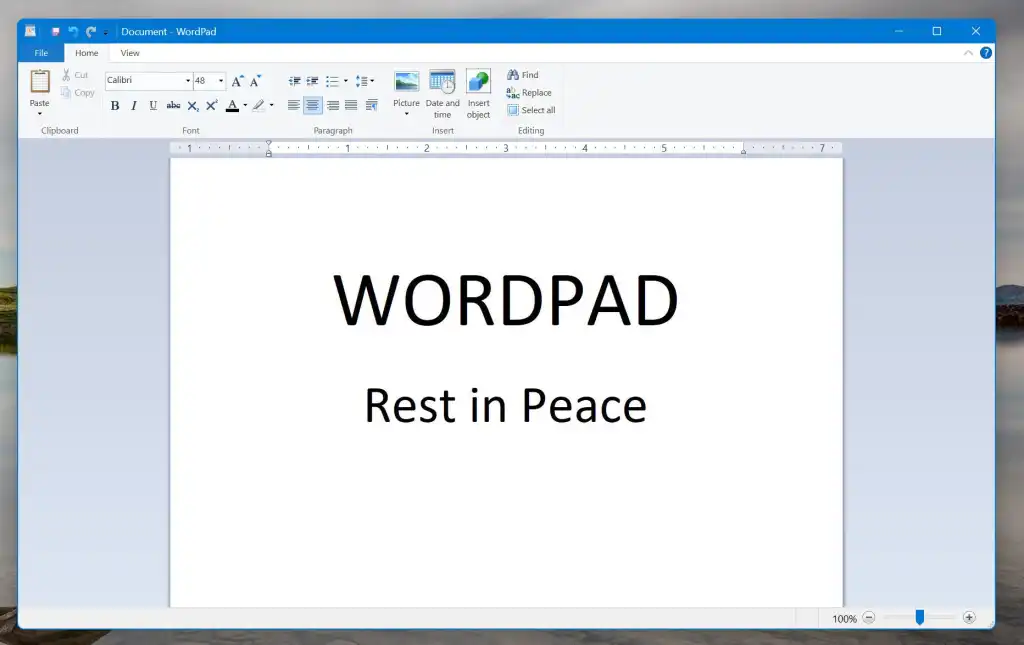WordPad is a versatile and user-friendly text editor that comes pre-installed with Windows operating systems. It’s perfect for those who need a simple, yet powerful tool to create and edit documents. But why choose WordPad over other text editors? Let’s dive in and find out!
Getting Started with WordPad
How to Open WordPad
Opening WordPad is a breeze. Simply click on the Start menu, type “WordPad” into the search bar, and select the WordPad application from the list of results. Alternatively, you can find it under the “Windows Accessories” folder in the Start menu.
Basic Layout and Interface Overview
When you first open WordPad, you’ll notice its clean and straightforward interface. The toolbar at the top offers various options for formatting and editing your text. Below the toolbar, you have the main document area where you’ll do all your typing and editing.
Creating a New Document
Starting from Scratch
To create a new document, just open WordPad and start typing in the blank document that appears. It’s that simple!
Opening an Existing Document
If you want to open an existing document, click on “File” in the top-left corner, then select “Open.” Navigate to the file you want to edit, select it, and click “Open.” WordPad supports several file formats, including .txt, .rtf, .docx, and .odt.
Basic Text Formatting
Changing Fonts and Sizes
You can easily change the font and size of your text in WordPad. Highlight the text you want to format, then select your desired font and size from the dropdown menus in the toolbar.
Using Bold, Italics, and Underline
To emphasize your text, you can use bold, italics, and underline. Highlight your text and click the “B” button for bold, the “I” button for italics, or the “U” button for underline.
Changing Text Color
To change the colour of your text, highlight the text and click the “A” button with a colour bar underneath it. Choose your desired colour from the palette that appears.
Paragraph Formatting
Aligning Text
You can align your text to the left, center, or right. Simply highlight the text and click the alignment buttons (left, center, right) in the toolbar.
Using Bullets and Numbering
For lists, you can use bullets or numbering. Highlight the text you want to format as a list, then click the bullet or numbering button in the toolbar.
Adjusting Line Spacing
To adjust line spacing, click on the “Line Spacing” button in the toolbar and select your preferred spacing option.
Inserting Elements
Adding Images
You can insert images into your WordPad document by clicking “Insert Object” in the toolbar, selecting “Create from File,” and then browsing to the image file you want to add.
Inserting Links
To add a hyperlink, type the URL directly into your document. WordPad will automatically recognize it as a link.
Including Tables
Although WordPad doesn’t support complex tables like Microsoft Word, you can create simple tables using tabs and spaces or by inserting an Excel object.
Saving and Exporting Documents
Saving Your Work
It’s crucial to save your work regularly. Click “File,” then “Save As,” choose your preferred file format, name your file, and click “Save.”
Exporting to Different Formats
WordPad allows you to export documents to various formats such as .txt, .rtf, .docx, and .pdf. Select “File,” then “Save As,” and choose the format you need from the dropdown menu.
Printing Documents
Print Preview
Before printing, it’s a good idea to preview your document. Click “File,” then “Print,” and select “Print Preview” to see how your document will look on paper.
Print Settings
To adjust print settings, go to “File,” then “Print,” and select “Print Setup.” Here, you can choose your printer, set the number of copies, and adjust other print options.
Using Templates
Accessing Built-in Templates
WordPad doesn’t have as many templates as more advanced word processors, but you can create your own or download templates online.
Creating Custom Templates
To create a custom template, design a document with your preferred formatting and save it as a template file. You can then open this template whenever you need to create a new document with the same format.
Advanced Features
Find and Replace
WordPad includes a handy “Find and Replace” feature. Access it by clicking “Edit,” then “Find” or “Replace.” This tool helps you quickly locate and replace specific text in your document.
Spell Check
While WordPad doesn’t have an integrated spell check, you can copy your text into another program with spell check capabilities, like Microsoft Word or a web-based tool, and then copy it back into WordPad after making corrections.
Customization Options
Customizing the Toolbar
You can customize the toolbar to include the tools you use most frequently. Right-click on the toolbar and select “Customize” to add or remove buttons.
Changing the Theme
WordPad doesn’t offer extensive theme options, but you can adjust the overall look and feel of your Windows operating system, which will affect WordPad’s appearance.
Tips and Tricks
Keyboard Shortcuts
Keyboard shortcuts can save you time. Some useful ones include Ctrl+C (copy), Ctrl+V (paste), Ctrl+X (cut), and Ctrl+Z (undo).
Efficient Editing Techniques
Use the “Find and Replace” feature for efficient editing, and familiarize yourself with keyboard shortcuts to speed up your workflow.
Common Issues and Troubleshooting
Resolving Formatting Problems
If your text isn’t formatting correctly, double-check that you’ve selected the right text and applied the desired formatting options.
Fixing Print Errors
If your document isn’t printing as expected, ensure your printer settings are correct and that your printer drivers are up to date.
WordPad vs Other Text Editors
WordPad vs Notepad
WordPad offers more formatting options than Notepad, making it better for creating more polished documents.
WordPad vs Microsoft Word
While WordPad is simpler and lacks some advanced features of Microsoft Word, it’s also free and comes pre-installed with Windows, making it a convenient option for basic document creation.
Conclusion
WordPad is a fantastic tool for beginners and those who need a straightforward text editor. It’s easy to use, comes with a range of useful features, and is perfect for creating simple documents. By practicing and exploring its capabilities, you’ll become more proficient and confident in using WordPad.
FAQs
How do I recover an unsaved WordPad document?
Unfortunately, WordPad doesn’t have an autosave feature. To avoid losing work, save your documents frequently.
Can I use WordPad for creating complex documents?
WordPad is best for simple documents. For complex formatting, you might need a more advanced word processor like Microsoft Word.
How do I add headers and footers in WordPad?
WordPad doesn’t support headers and footers. For this functionality, consider using Microsoft Word or another advanced word processor.
Is WordPad available on all versions of Windows?
Yes, WordPad comes pre-installed on all modern versions of Windows.
What file formats can WordPad save?
WordPad can save documents in .txt, .rtf, .docx, and .pdf formats, among others.


